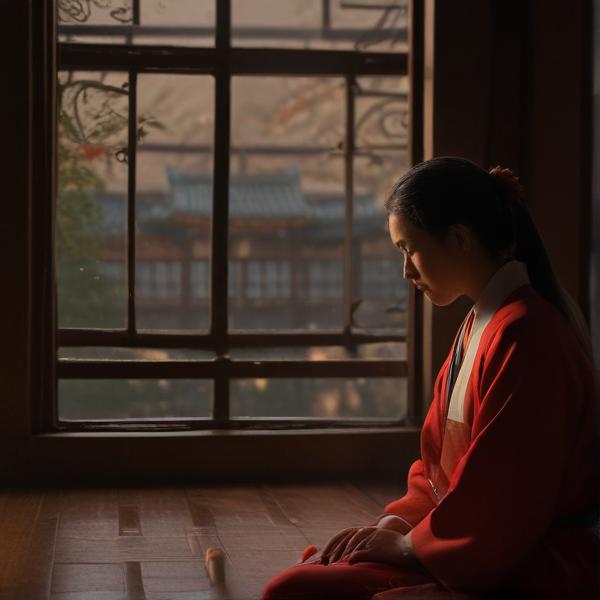基本信息 (Basic Information)
含义与用法 (Meanings & Usage)
中文核心释义 (Core Chinese Meaning): 重叠,堆叠,层层相压。
英文核心释义 (Core English Meaning): To stack, to pile up, to overlap; layers.
象形意义 / 为何这么写 (Pictographic Meaning / Writing Rationale)
文言文释义 (Classical Chinese Meaning)
与现代意义相近,文言文中多用作‘重’、‘重叠’、‘重复’之意。Similar to modern meaning; in Classical Chinese it mainly meant 'to overlap', 'to pile', or 'to repeat'.
深入学习 (In-depth Study)
字源故事 (Origin Story)
字形演变 (Character Evolution)
常用词语和例句 (Common Words & Examples)
叠加 (superimpose, overlay, to be added together)
两个因素的影响可以叠加。
Eng: The effects of the two factors can be superimposed.
折叠 (to fold)
请把椅子折叠起来。
Eng: Please fold up the chair.
重叠 (to overlap)
两张纸重叠在一起。
Eng: The two sheets of paper are overlapping.
相关成语 (Related Idioms)
相关成语信息待补充。Related idiom information pending.
多语言翻译 (核心释义) (Translations (Core Meaning))
- French: empiler, superposer
- German: stapeln, überlappen
- Spanish: apilar, superponer
- Italian: impilare, sovrapporre
- Portuguese: empilhar, sobrepor
- Russian: складывать, накладывать
- Arabic: تكديس، تراكب
- Persian: روی هم گذاشتن، انباشتن
- Dutch: stapelen, overlappen
- Polish: układać w stos, nakładać
- Vietnamese: xếp chồng, chồng lên
- Ukrainian: накладати, складати
视频学习资源 (Video Learning Resources)
通过以下链接在热门视频网站搜索 "叠" 的更多讲解:
Search for more explanations of "叠" on popular video sites:
- 在 Bilibili.com 搜索 "叠 字源 说文解字" (Search on Bilibili)
- 在 YouTube.com 搜索 "叠 character origin etymology" (Search on YouTube)
网络参考 (Web References for "叠") ()
网络内容摘要 (Web Content Summary):
核心含义与字形起源:“叠”主要表示“重叠、层层相加”的意思,其本义是指东西一层层地堆放在一起。Core Meaning & Etymology: The character “叠” primarily means “to stack, pile up, or overlap,” referring to objects being layered or placed one on top of another.
字形起源与文化背景:“叠”最早的写法为“曡”或“疊”。《说文解字》记载,古人认为“叠”与法官多日审案、层层推敲后得出合适判决有关,寓意经过多次反复之后的适宜决断。这也反映出汉字象形和意会的特点。Etymological/Cultural Note: The oldest forms are “曡” or “疊.” Ancient dictionaries record that “叠” related to judges reviewing cases repeatedly over several days before making a decision—a metaphor for careful, layered consideration.
- 异体字:“疊”、“曡”为“叠”的已废止异体字。Variant Forms: “疊” and “曡” are obsolete variant forms of “叠.”
- 易混字:不要与“迭”混淆。“迭”是表示“轮流、交替”之意,源自不同的字根(“辶”旁)。Confusing Character: Do not confuse with “迭,” which means “in turns; alternately” and has a different structure (with the movement radical “辶”).
常用词语及成语:例:叠被子(fold the quilt)、叠加(superimpose, overlay)、层出不穷(不断地出现,像一层层相叠)。Common Words/Idioms: Examples: 叠被子 (fold the quilt), 叠加 (superimpose), 层出不穷 (endlessly emerging, like layer upon layer).
注:本字无特别复杂的用法,需注意与易混字区分。Note: No especially complex usages, but take care to distinguish from similar-looking characters.
汉字"叠"的起源、演变过程-汉字字源辞典
汉字字源辞典收录2976条汉字词条,基本涵盖了常见汉字的字源解析,是汉字研究的必备工具。 ... "《异体字表》把" 、疊、曡"三字作为"叠"的异体字废除。"迭"是形声字,形符是辶(辵),声符是失,本义为更迭、交替。
【叠,疊】的甲骨文金文篆文字形演变含义 - 甲骨文研究网 甲骨文密码字典 在线甲骨文字典研究 - 甲骨文研究网 甲骨文密码字典 在线甲骨文字典 ...
附 文言版《説文解字》:曡,杨雄説以为,古理官决罪,三日得其宜,乃行之。从晶,从宜。亡新以为,叠从三日太盛,改为三田。 附 白话版《说文解字》:叠,杨雄的说法认为,古代法官判罪,经过多日的审讯,得到与案情相宜的判决,就去执行。
更多图片 (叠 More Images) ()
